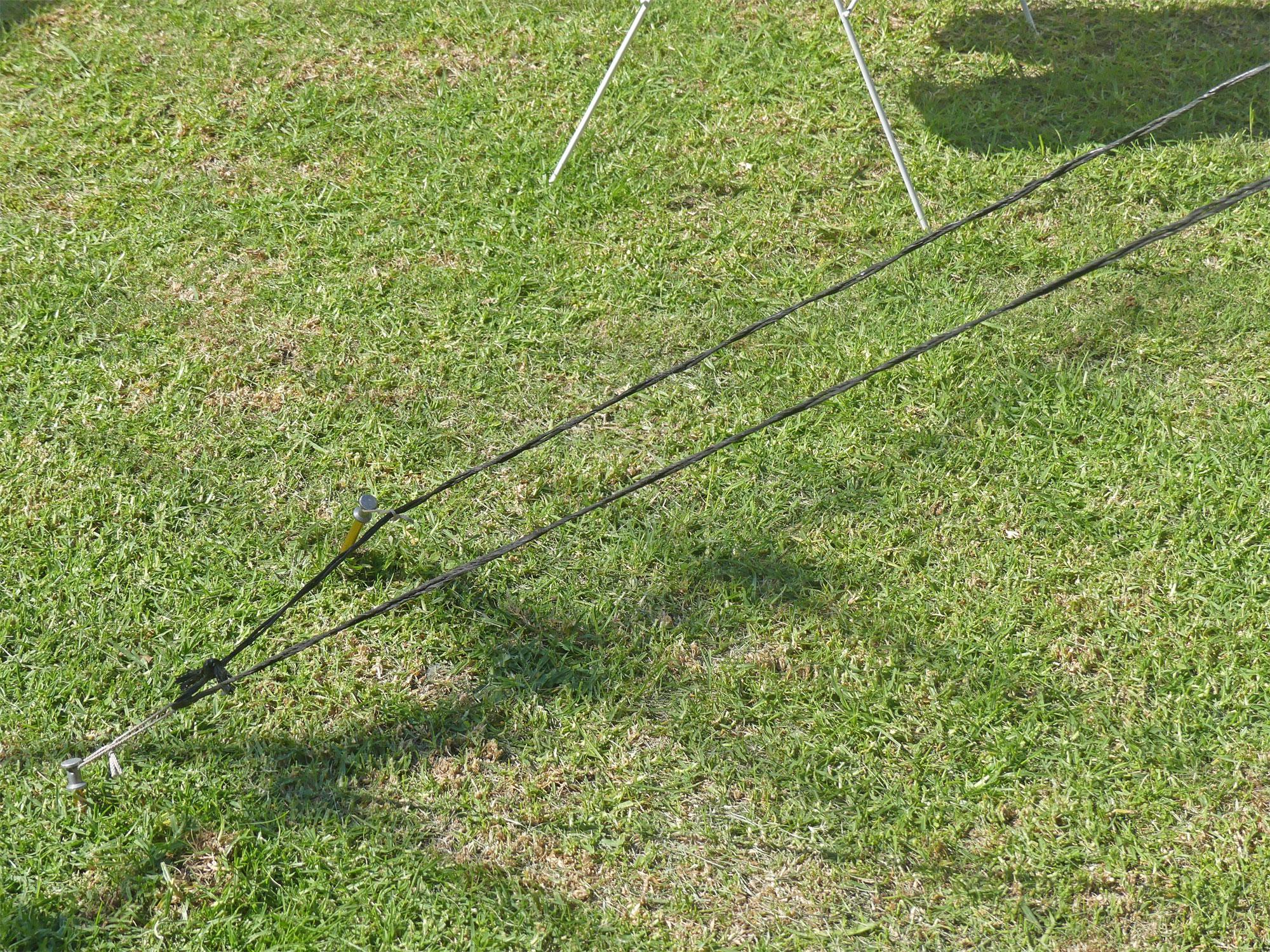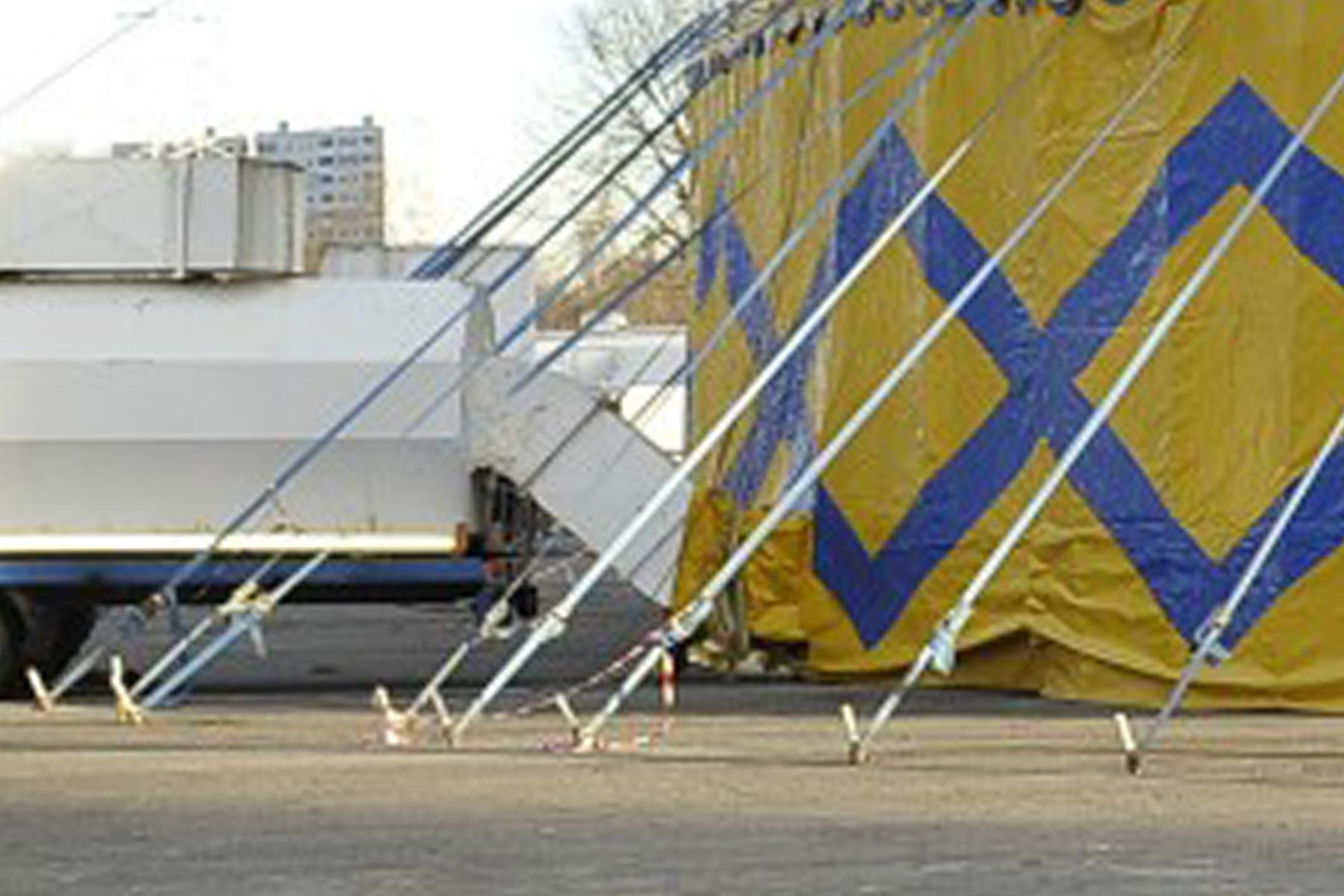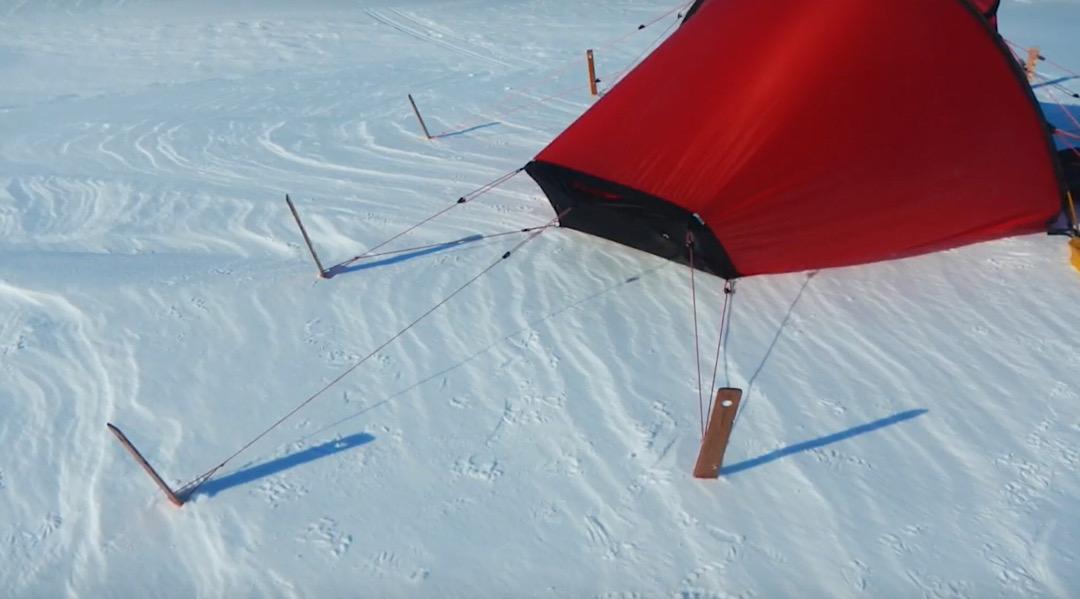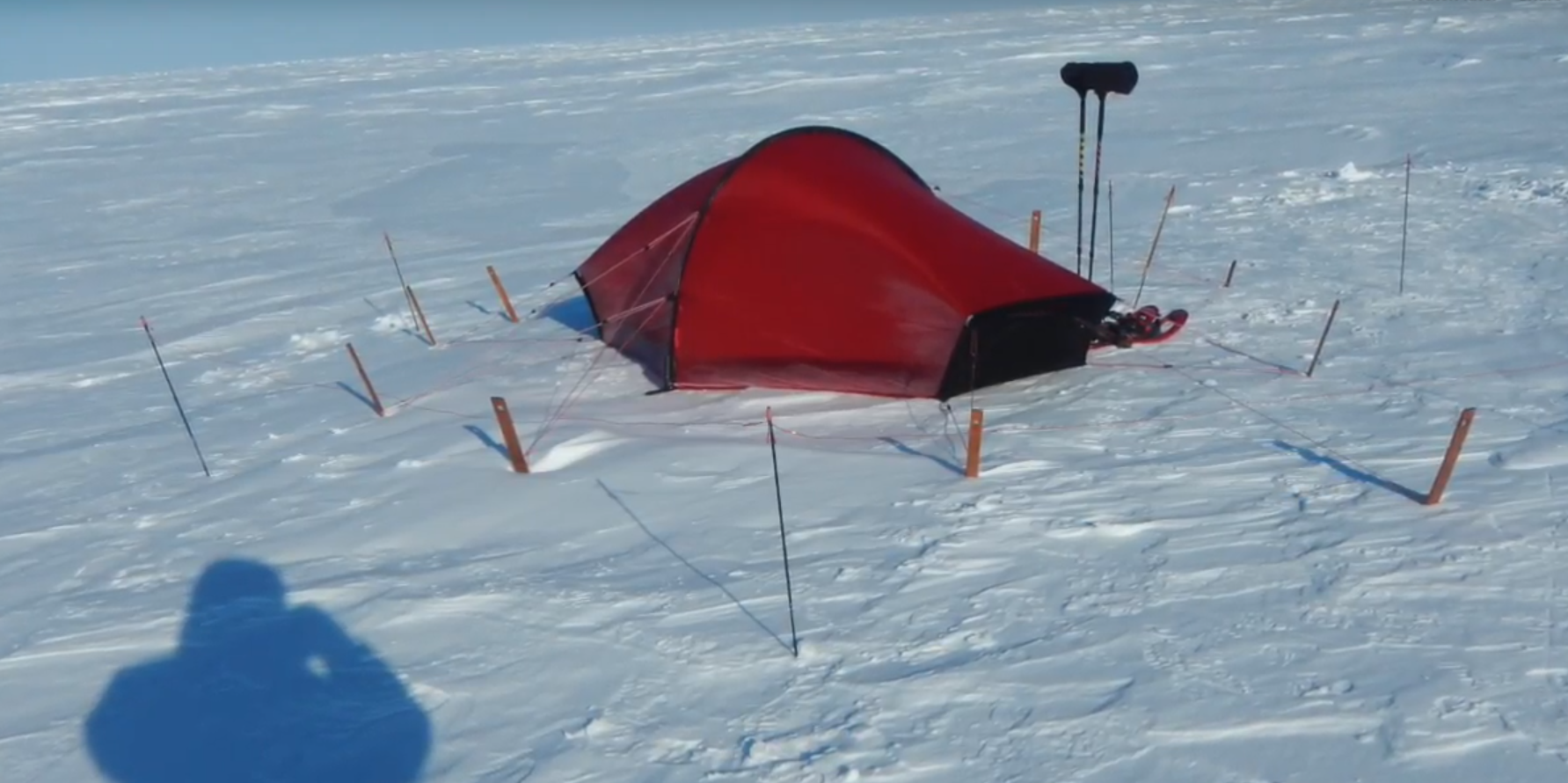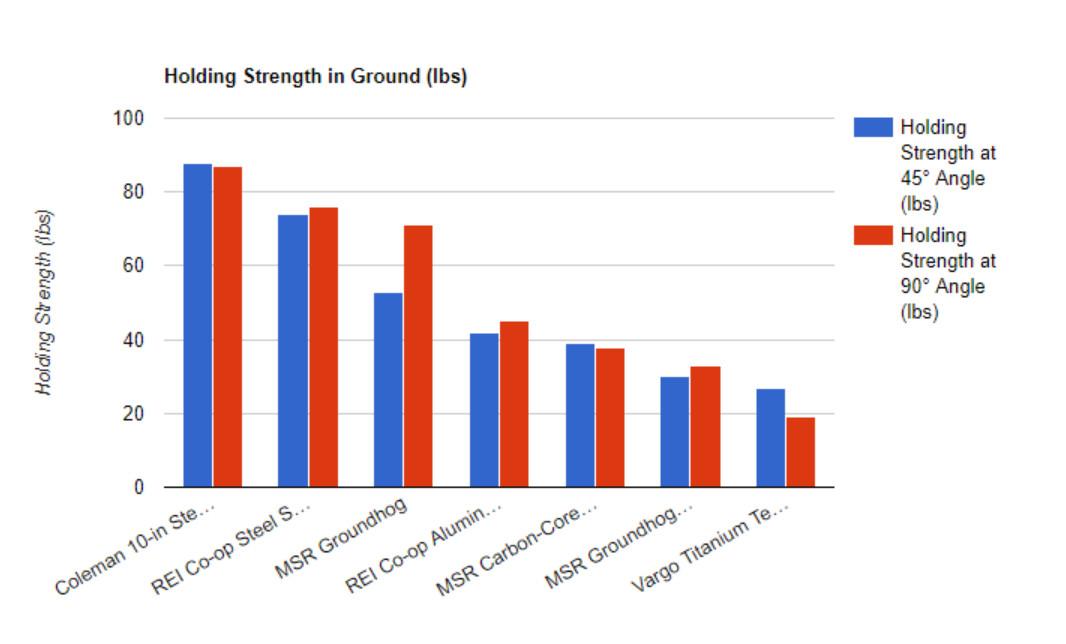Topic
why tents fail in the wind
Forum Posting
A Membership is required to post in the forums. Login or become a member to post in the member forums!
Home › Forums › Gear Forums › Gear (General) › why tents fail in the wind
- This topic has 172 replies, 33 voices, and was last updated 4 years, 11 months ago by
 Roger Caffin.
Roger Caffin.
-
AuthorPosts
-
Mar 7, 2020 at 9:33 pm #3634777
For sure!
You may have some problems getting a load cell into the anchors at the windward corners. Keep those anchors very short.Cheers
Mar 8, 2020 at 4:24 am #3634793I havent had a tarp fail yet
But i usually put big rocks on top of stakes just in case if exposed, and rocks available. Its the reason i only carry thin ti shepherd stakes, rocks are usually available in mtns. That, and often, its the only kind of stake you can get into rocky soil
Mar 8, 2020 at 9:18 am #3634813You might get away with that in a West Coast summer
Ha! You don’t know how wimpy we really are. West Coast winter is when I go out with my titanium toothpicks, thank you very much.
I might have to try the hair tie option. I have some large hair ties that I cannot use because I don’t have that much hair.
Mar 8, 2020 at 12:14 pm #3634840Interpretations of the OP experiment might be quite different if the data were posted as a graph of actual force, rather than as a percentage of preloading.
Red line, 5 lb preload, 25% peak increase = 1.25 lb increase
Blue line, 20 lb preload, 8% peak increase = 1.6 lb increase
Thus, the actual increase in force due to wind loading is fairly similar, with the higher preload causing greater increase during a wind event (in this brief, one-time, limited-view experiment). One system is going from 5 lb to 6.25 lb, and the other is going from 20 lb to 21.6 lb. If a stake can only hold 15 lb, then a natural conclusion is that 5 lb preload would work just fine, but 20 lb preload would not — during the given test conditions.
I’m not suggesting that shelters should be set up floppy. As others have rightfully pointed out, stability in wind is dependent on an enormous number of factors. I applaud Ryan’s attempt to quantify what’s happening in a dynamic situation, but let’s keep in mind that his experiment only looks at one tiny part of a much larger puzzle.
Mar 8, 2020 at 1:52 pm #3634867Mar 8, 2020 at 2:48 pm #3634871I think you may be overlooking the real dynamic difference between the red and blue lines. The red line was ‘rattling’ around, and that is more of a problem.
Cheers
Mar 8, 2020 at 7:37 pm #3634913OK, as I look into tent stakes and failure, I came across several articles that seemed at first counter intuative to what I have been doing. Apparently, the proper way to set a tent stake is vertical and not at an angle. The theory being that vertical stakes create a larger soil wedge to resist becoming unlodged. What are your thoughts?
http://www.muttonrentals.com/files/page/tent-ppt.pdf?phpMyAdmin=PwRrpSgFUH%2Ctz4LfHEbjIO94vnc
https://upgradecamping.com/how-to-use-tent-stakes-the-right-way/
http://rentalworld.com/Party_Center/tents/images/Tent_Handbook_3rd_Ed.pdf
Mar 8, 2020 at 8:13 pm #3634917Wow! That’s interesting food for thought, Jon.
Mar 8, 2020 at 10:03 pm #3634940I think muttonrentals may be talking about something very different from us – like large wedding marquees.
The reality is of course a shade more nuanced (or a huge amount more). If you drive a peg in vertically and then run a guy rope at 45 degrees to it, there is as much chance of it pulling up vertically as pulling out sideways (give or take a bit). Is having the customer drive the peg in vertically safer than letting them drive it in at a too-steep angle? And of course what sort of pegs do these rental companies provide anyhow? They do mention pegs of ‘1″x42″‘ in size. These are not our Ti wires.
I note that one of muttonrentals photos shows tall pegs driven vertically halfway into the ground with the guy ropes attached to the TOPs of the pegs, a foot up in the air. Yeah, right. They also claim that most tents are made of vinyl, so perhaps one should simply accept that they are on a different planet to us and ignore them.
They do have some great photos of utterly trashed tents …
Cheers
Mar 8, 2020 at 11:00 pm #3634944This is a very quick and simple test. maybe not all that scientific but does the job for me.
I planted two pegs into the ground , one straight down the other at 45 degree.
Connecting them with a rope that I had going around my back I leaned back and put pressure on till one peg came out . Over several test, some using even pressure others kind of bouncing back to cause a jerk, the peg that was straight down came out first.

BTW , the far peg was inserted vertical not leaning towards me as in the photo. The photo is at the end of one test
Mar 8, 2020 at 11:08 pm #3634945I did what Franco did as well in my backyard, using 8″ groundhogs, 45 deg guyline angle, but using an actual load cell for looking at the forces required to pull the stake out.
For vertical stakes, the average of six tests was about 52 lbf.
For stakes placed at a 60-degree (approx) angle, the average of 6 tests was about 59 lbf.
For stakes placed at a 45-degree (approx) angle, the average of 6 tests was about 57 lbf.
Mar 9, 2020 at 12:07 am #3634951@Ryan
What sort of soil were your tests done in?Cheers
Mar 9, 2020 at 12:18 am #3634953@rcaffin lawn grass (fill), pretty wet (snowmelt).
Mar 9, 2020 at 12:25 am #3634955Lawn grass => dense root mass?
Cheers
Mar 9, 2020 at 3:00 am #3634961For over 100 years the Orfei family has been setting up circus tents over and over again.
This is a recent photo of one of their tents :

should be easy enough even on this small size to see how the stakes are set.
here is a crop …
 Mar 9, 2020 at 8:15 am #3634982
Mar 9, 2020 at 8:15 am #3634982The shape of tents like that is interesting
Very steep at the pole – loses about 50% of its vertical distance in 20% of the horizontal distance
Whenever I see one of those I wonder if there’s some application for backpacking tents
Pyramid tents do that a little
Mar 9, 2020 at 8:24 am #3634985MSR Twin Peaks???
Mar 9, 2020 at 9:36 am #3635001Marco & Ryan,
Can’t beat good testing on real-ish backpacking conditions. My guess is that there is a lot of differences between the top surface and deep into the soil. Angled it is.
Mar 9, 2020 at 2:35 pm #3635032You will also notice that they use a lot of pegs, and that the ropes are attached at the ground.
As for the high peaks – that is probably a combination of PR and engineering: the high peaks get the diameter much larger to distribute the tension in the fabric.
Cheers
Mar 9, 2020 at 2:56 pm #3635035Three years ago our friend Peter Vacco hiked a section of the Northwest Passage (north of the Arctic Circle) on the sea ice. He got stuck for a few days in a blizzard with extreme winds in his Hilleberg Atko and was just fine.
Check out his stakes and many guy lines.

Here is the video of his trip.
 Mar 9, 2020 at 4:28 pm #3635042
Mar 9, 2020 at 4:28 pm #3635042Yup – as I’ve been saying, I’m convinced the single most valuable thing you can do to secure your shelter is not to skimp on pegging points. I’ve seen people boast that their shelter only requires 2 pegs. Very nice, till you get hit by a hoolie…
 Mar 9, 2020 at 4:52 pm #3635045
Mar 9, 2020 at 4:52 pm #3635045Using MSR Groundhogs…might want to consider vertical over 45° stake angle:
https://www.99boulders.com/best-tent-stakes
 Mar 9, 2020 at 7:38 pm #3635061
Mar 9, 2020 at 7:38 pm #3635061 Mar 9, 2020 at 11:02 pm #3635083
Mar 9, 2020 at 11:02 pm #3635083Still confusing. How the big boys play:

And from REI (who has given mixed signals on this)
5. Hammering in your tent stakes at an angle.
After a very controversial email chain here at REI, our tent designers tested this theory out in a wind tunnel. It turns out that tent stakes are strongest when hammered straight into the ground. Another surprising find from that test: Guylines are strongest when perpendicular to the fly wall. If you’re going to be encountering serious winds, run the guyline over the top of a support point, like a trekking pole, making a 90° angle.https://www.rei.com/blog/camp/9-ways-youre-camping-wrong-without-even-realizing-it
Mar 9, 2020 at 11:06 pm #3635086Many tent stake tests don’t report parameters such as:
- Soil composition and saturation
- Guyline angle to ground (vs stake angle)
- Guyline attachment distance above ground at stake
- Stake length in the ground under realistic conditions
I suspect most of these could make a big difference in holding strength.
Other stake features are important, too. After switching to 8-inch Easton Nano stakes recently, I’ll never go back to slicing up gear, shoes, and fingers on sharp-edged, sharp-cornered, dirt-holding Groundhogs and similar designs.
Would silpoly tents or tarps have intermediate elasticity-under-load characteristics between silnylon and DCF?
— Rex
-
AuthorPosts
- You must be logged in to reply to this topic.
Forum Posting
A Membership is required to post in the forums. Login or become a member to post in the member forums!
Trail Days Online! 2025 is this week:
Thursday, February 27 through Saturday, March 1 - Registration is Free.
Our Community Posts are Moderated
Backpacking Light community posts are moderated and here to foster helpful and positive discussions about lightweight backpacking. Please be mindful of our values and boundaries and review our Community Guidelines prior to posting.
Get the Newsletter
Gear Research & Discovery Tools
- Browse our curated Gear Shop
- See the latest Gear Deals and Sales
- Our Recommendations
- Search for Gear on Sale with the Gear Finder
- Used Gear Swap
- Member Gear Reviews and BPL Gear Review Articles
- Browse by Gear Type or Brand.

